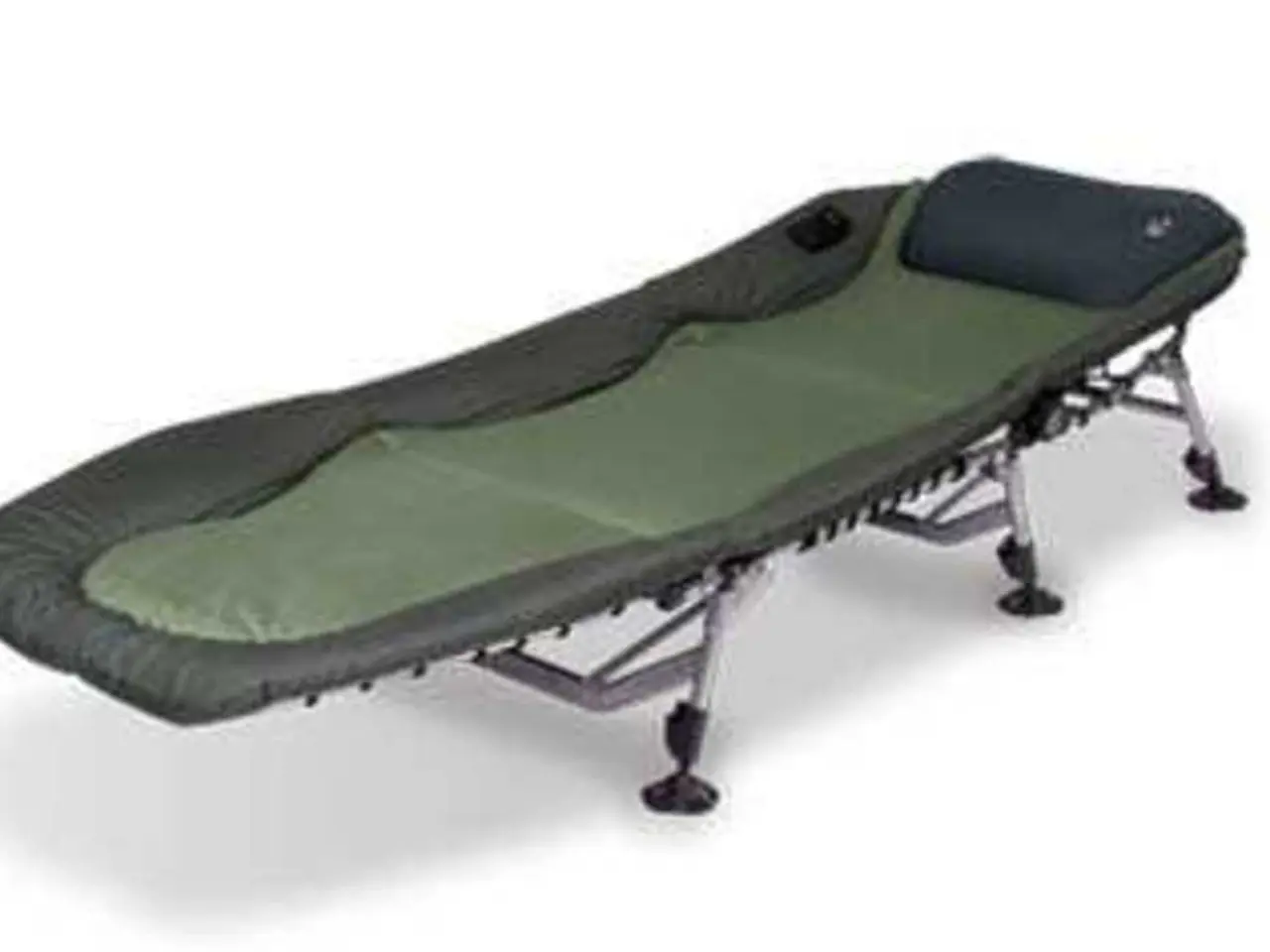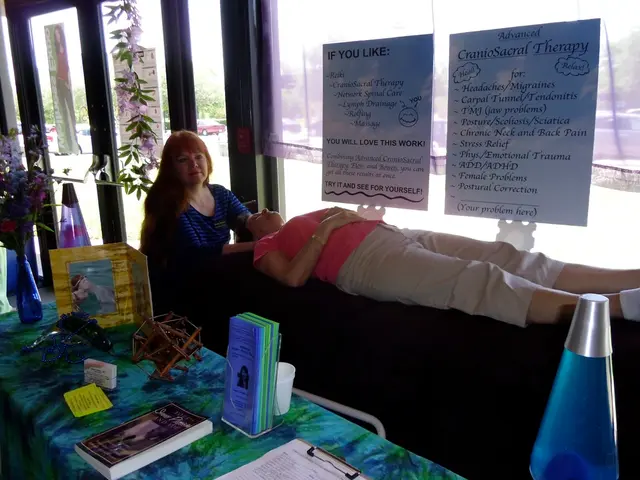Tendonitis of the Patella: Remedies, Workouts, Signs, and Healing Duration
Patellar tendonitis, often referred to as 'jumper's knee', is a common knee injury that affects athletes and non-athletes alike. This condition occurs when the tendons connecting the kneecap to the shinbone become inflamed from overuse, typically due to repetitive activities such as running and jumping.
If home treatment measures, like rest and icing, do not resolve symptoms, it may be necessary to seek further treatment from a doctor. This could involve wearing a knee brace for 3-6 weeks, undergoing physical therapy, or in rare cases, surgery. If left untreated, a person may risk a tendon tear, which can be a serious injury.
Physical therapy plays a crucial role in the treatment of patellar tendonitis. It can help to gradually restore movement as the tendon heals and find the cause of the tendonitis by examining a person's movement patterns. After recovering from patellar tendonitis, individuals can prevent future injuries by adopting a few simple habits. These include warming up and stretching before exercise, cooling down and stretching after exercise, wearing knee support during sports, doing exercises to strengthen the leg muscles, avoiding jumping and landing on very hard surfaces, and modifying activities.
Recovery time for patellar tendonitis varies depending on the severity of the injury, a person's overall health and age, and how they treat the condition. Mild patellar tendonitis usually heals in a few weeks, but in more severe cases, it may take 3 months or more to recover.
A doctor or physical therapist diagnoses patellar tendonitis through a physical exam, testing the knee's range of motion, and asking about symptoms. They may also use ultrasound or MRI to identify the condition and look for any serious tendon damage.
Effective treatment for patellar tendonitis combines stretching tight muscles that increase tendon load, isometric and eccentric strengthening exercises for the patellar tendon, and balanced strengthening of related muscle groups.
Key exercises and stretches for patellar tendonitis include stretching the quadriceps and hip flexors, isometric contractions, eccentric exercises like the eccentric decline squat, and progressive patellar tendon strengthening exercises such as single leg step downs, single leg box squats, and assisted skater squats. Strengthening the posterior chain, which includes the back of the leg and hip muscles, can also help correct muscle imbalances and reduce excessive strain on the patellar tendon.
Additional supportive therapies include using a patellar tendon strap to offload the tendon during activity and physical therapy modalities such as iontophoresis to reduce inflammation. However, exercises remain central to the treatment and recovery process.
Anyone with ongoing discomfort or knee pain should contact a doctor to evaluate their knee. A 2017 German study found that a significant number of young soccer players experienced patellar tendonitis, highlighting the importance of proper care and prevention.
In summary, an effective regimen for patellar tendonitis includes targeted stretching of quads and hip flexors, isometric holds for quick pain relief, eccentric exercises like decline squats, functional strengthening with single-leg exercises, and balancing the anterior and posterior leg muscles to restore muscular symmetry and tendon health. With the right care and prevention strategies, individuals can manage and overcome patellar tendonitis and return to their active lifestyles.
- Obesity can exacerbate the symptoms of patellar tendonitis due to the increased stress on the knees.
- Dermatitis, a common skin condition, may not seem related to patellar tendonitis, but poor nutrition can lead to both.
- Seeking medical advice for patellar tendonitis is crucial, as physical therapy may be required for recovery, which is a part of the fitness-and-exercise regime.
- Predictive science can play a role in identifying individuals at risk of developing chronic knee diseases like patellar tendonitis based on their medical-conditions and health-and-wellness practices.
- Depression is a mental-health issue that can affect an individual's motivation to follow through with a recommended fitness-and-exercise program, potentially leading to a slow recovery from patellar tendonitis.
- Crohn's disease, a chronic inflammatory bowel disease, can cause loss of appetite and malnutrition, which in turn can weaken the body and hinder recovery from patellar tendonitis.
- Arthritis and spondylitis, both chronic diseases affecting the joints, share similarities with patellar tendonitis in terms of inflammation and the potential need for physical therapy.
- Psoriasis, an atopic dermatitis, and psoriatic arthritis are examples of conditions where nutrition plays a significant role in management, similar to patellar tendonitis.
- Alzheimer's disease and accidental falls are not directly related to patellar tendonitis, but maintaining one's fitness-and-exercise routine can help reduce the risk of falls and improve overall health.
- Ankylosing spondylitis, a type of spondylitis, shares similarities with patellar tendonitis in terms of chronic inflammation, and management strategies may include similar fitness-and-exercise regimes.
- AQ (Autoantibodies) tests can help identify autoimmune disorders that may contribute to chronic diseases like patellar tendonitis and psoriasis.
- Medical-conditions such as patellar tendonitis, Crohn's disease, and psoriasis highlight the importance of a balanced diet and regular exercise for maintaining mental-health and overall physical well-being.




